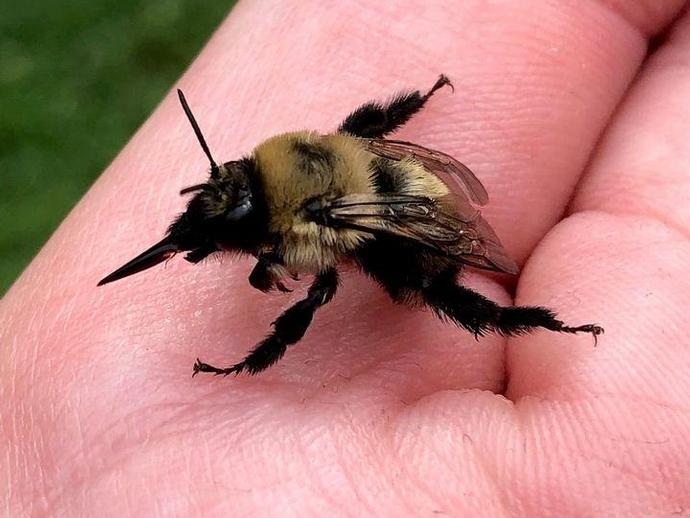July 11, 2021
We're reaching into the archives for today's #BenInNature update presented by our friends at Carter Bank & Trust! The following post was originally published on July 11, 2020.
Have you ever seen a bumblebee stick out its tongue? You have now!
According to VMNH Associate Curator of Invertebrate Zoology Dr. Kal Ivanov, this bumblebee is most likely Bombus impatiens, the common eastern bumblebee (any uncertainty is the result of my photography, not Dr. Ivanov's expertise).
These bumblebees can be found in temperate forests in the eastern U.S., southern Canada, and the eastern portion of the Great Plains. They're highly adaptable and they're a crucially important pollinator species. Many commercial farms buy huge numbers of bumblebee hives to pollinate their crops, and private citizens can even buy bumblebee hives to pollinate their gardens!
The common eastern bumblebee lives in nests that are 1-3 feet underground. While most bees and wasps have highly structured nests, bumblebees are more laid back; they lay eggs randomly throughout the nest, wherever they feel like. The nests are comprised of queens, workers, and males, and as with virtually all species of bees, the males cannot sting.
While the females can sting, they do so rarely and only if provoked. While I wouldn't recommend it (especially if you're allergic), I held this bumblebee right in the palm of my hand without issue.
While many people hate anything that even halfway resembles a bee, you should never kill bumble bees (or any bees, for that matter)! It's been estimated that the economic value of pollination services worldwide is somewhere between $217 billion and $3 trillion per year! With so many pollinators in danger, we certainly can't afford to lose any.
ABOUT #BenInNature
Social distancing can be difficult, but it presents a great opportunity to become reacquainted with nature. In this series of posts, Administrator of Science Ben Williams ventures outdoors to record a snapshot of the unique sights that can be found in the natural world. New updates are posted Monday - Friday, with previous posts highlighted on the weekends. This series of posts is made possible thanks to the support of VMNH Corporate Partner Carter Bank & Trust (www.cbtcares.com).
NATURE PHOTO IDENTIFICATIONS
If you discover something in nature that you would like help identifying, be sure to message us right here on Facebook with a picture (please include location and date of picture) and we'll have our experts help you identify it!

 Hours & Admissions
Hours & Admissions Directions
Directions

